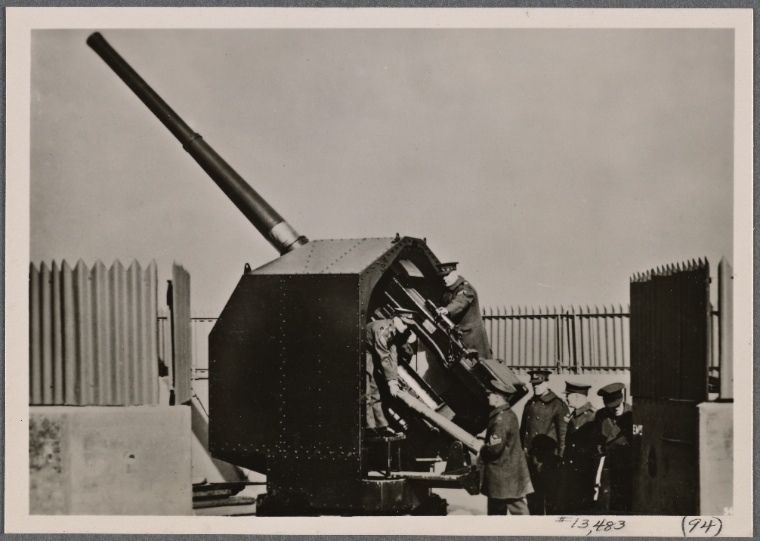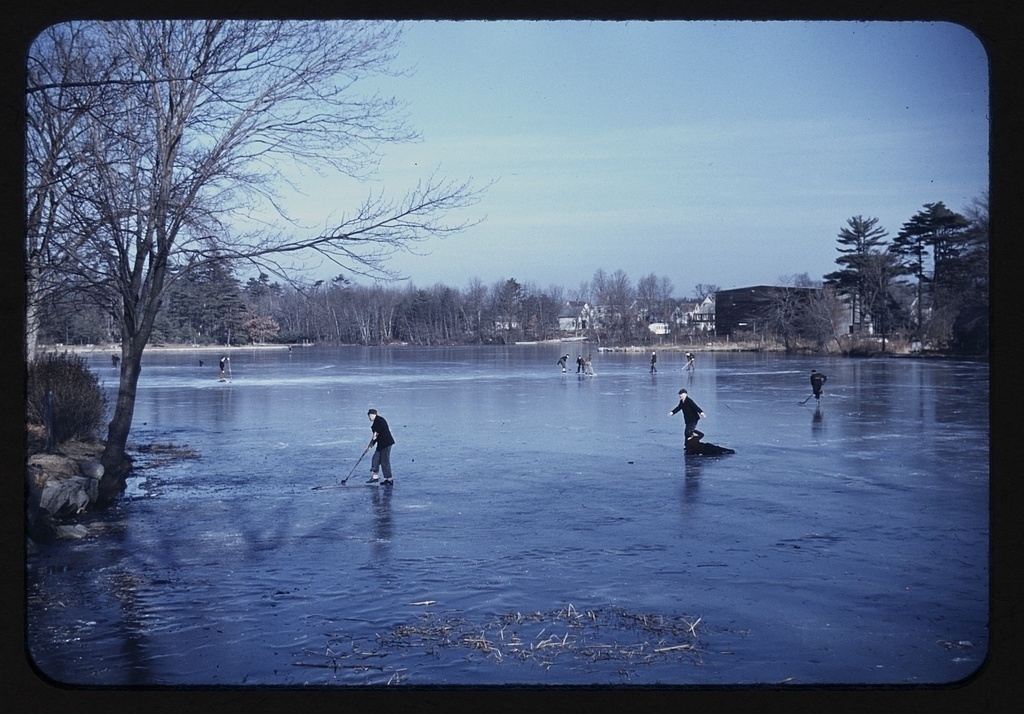Old Photos
-
“Fay Hubbard, 13-year Old Suffragette” in New York on February 9, 1910.
“Suffragette! Suffragette!” This is the cry of little Fay Hubbard as she goes through the crowd at the suffragette meetings in New York selling copies of the paper… Miss Hubbard is a niece of Mrs. E. Ida Williams, the recording secretary of the Suffragette…
-
Mary Edwards Walker (1832–1919). Dr. Walker served as a surgeon in the U.S. Army during the Civil War. She was a Medal of Honor recipient, a suffragette, and a dress reformer.
-
For further details about the Labor Canteen, see the long caption for Washington Area Spark, “Social equality at the Labor Canteen,” https://www.flickr.com/photos/washington_area_spark/54266105006/. ↩︎
Nazi Propaganda Photo and Caption Prefigure Putinesque Propaganda

Putin’s regime and its supporters would have us believe that Russia’s 2022 invasion of Ukraine is purely defensive. This 1939 propaganda image by Heinrich Hoffmann and its accompanying caption offered a similarly cynical story in the run-up to Germany’s invasion of Poland.
England lives in groundless fear of war. Their armaments are of monstrous proportions. Our picture shows the new English anti-aircraft [gun].1
In this tall tale, Britain appeared as the aggressor, arming for no good reason. The giant anti-aircraft cannon was meant to suggest “monstrous” bellicosity.
Catalog card processing at the Library of Congress, Washington, DC, ca. 1917–1920.
Via Library of Congress, https://www.loc.gov/pictures/item/2016649543/.
Jewel Mazique at a Library of Congress card catalog, Washington, DC, ca. 1942.
Via Library of Congress, Farm Security Administration/Office of War Information photograph collection, https://www.loc.gov/pictures/item/2017828946/.
Photo of 1909 Child Labor Protest
Child labor protest, probably in New York City on May 1, 1909. Note the U.S. flag that the girl wearing a sash in Yiddish is holding. The girl with a sash in English seems to be holding a flag, too, albeit one in a single color, perhaps socialist red. The message on the sashes is uncompromising: “ABOLISH CHILD SLAVERY!”
Bain News photograph, via Library of Congress, https://www.loc.gov/pictures/item/97519062.
New York World-Telegram photograph by Fred Palumbo, 1964:
Miss April Lou, teacher at PS 1, Manhattan, with six Chinese children, recent arrivals from Hong Kong and Formosa [aka Taiwan], who are holding up placards giving his or her Chinese name (both in ideographs and in transliteration) and the [American English] name to be entered upon the official school records.
Library of Congress, New York World-Telegram & Sun Collection, www.loc.gov/pictures/item/94512334/.
“Mexican miner’s wife and child are visited by another miner’s wife (Hungarian) who is interested in starting a maternal health clinic there. Scotts Run, Bertha Hill, West Virginia” by Marion Post Walcott for the Farm Security Administration, 1938. NYPL Digital Collections, image id 58749987.
A 1943 Photo of Welders for Women's History Month
“Skilled women workers helped build SS George Washington Carver.” Photo by E. F. Joseph for the Office of War Information, Kaiser Shipyards, Richmond, California, ca. 1943.
With nearly 1,000 Negro women employed as burners, welders, scalers and in other capacities at the Kaiser Shipyards in Richmond, Calif., women war workers played an important part in the construction of the Liberty Ship, SS George Washington Carver, launched on May 7, 1943. Welders Alivia Scott, Hattie Carpenter and Flossie Burtos await an opportunity to weld their first piece of steel on the ship.
Repository: Schomburg Center for Research in Black Culture, NYPL Digital Collections, image id 1206635.
Photo by Carol M. Highsmith, July 18, 2015:
Members of the Native American Women Warriors, a Pueblo, Colorado-based association of active and retired American Indians in U.S. military service, at a Colorado Springs Native American Inter Tribal Powwow and festival in that central Colorado city.
Credit: Gates Frontiers Fund Colorado Collection within the Carol M. Highsmith Archive, Library of Congress, Prints and Photographs Division. Further details, including names and ranks, at https://www.loc.gov/pictures/item/2015633463/.
Two Suffragettes
Images via Library of Congress, PPOC, https://www.loc.gov/pictures/item/92510578/ and https://www.loc.gov/pictures/item/2005684835/.
Intersections: three photos of Ernestine Eckstein in a 1965 picket line outside the White House protesting Federal discrimination against gay people in civil and military service and their obtaining security clearances. Her sign reads, “DENIAL OF EQUALITY OF OPPORTUNITY IS IMMORAL.” Eckstein was a Black woman, whereas most of the other picketers appear to have been white men. Another lesbian activist, white, is visible in one photo: Barbara Gittings. The photographer was Gitting’s white partner, Kay Tobin.
Photos via the Barbara Gittings and Kay Tobin Lahusen Gay History Papers and Photographs Collection, NYPL Digital Collections, images 1605765, 1605764, and 1605766

“Murray Hill Hotel, Manhattan” by Berenice Abbott on November 19, 1935, for her “Changing New York” Federal Art Project.
Via The New York Public Library, image id 458449867.
“When this is all over, Adams Morgan, Washington, DC” by Tracy Meehleib, April 8, 2020. Via Library of Congress, https://www.loc.gov/pictures/item/2020632316/. License: CC BY-NC-ND.
Photo of Mixed Race Sociability in Jim Crow Washington, DC, 1944
Pete Seeger at twenty-five entertaining federal workers, sailors, and soldiers with a banjo and song at the opening of the Labor Canteen in Washington, DC, on February 13, 1944. This unsegregated place in a Jim Crow city was sponsored by the Federal Workers of America and the Congress of Industrial Organizations.1 Note First Lady Eleanor Roosevelt enjoying herself in the mixed race and sex audience. On the wall behind the merrymakers are sketches of a hapless character undergoing physical training, perhaps Private Snafu.
Source: Office of War Information, Library of Congress, https://www.loc.gov/pictures/item/2017864322/
Negro boy near Cincinnati, Ohio by John Vachon for the Farm Security Administration, 1942 or 1943.
Library of Congress, https://www.loc.gov/pictures/item/2017877922/.
Inspiring Photo from 1971 for Our Troubled Times
“Isabel Miller and Barbara Gittings hugging librarians” in 1971 at the American Library Association Conference in Dallas, Texas. (Miller is on the left. Gittings is on the right in the floral sleeveless dress.)
Librarians can be central in the fight against bigotry and for equal rights, which might explain why some gay rights activists were there. (An important example: early professional Black librarians.)
Photo by Kay Tobin, via the Barbara Gittings and Kay Tobin Lahusen Gay History Papers and Photographs Collection, NYPL Digital Collections, image ID 1606079. 🏳️🌈
Photo of Joy and Love, 1962
So much joy in this photo, so much love: “Barbara Gittings in shower, circa 1962” by Kay Tobin. 🏳️🌈
Via Barbara Gittings and Kay Tobin Lahusen Gay History Papers and Photographs collection, NYPL Digital Collections, image ID 1605708.

Group portrait of a Tuskegee Airmen squadron, U.S. Army Air Corps, ca. 1939–45. Schomburg Center for Research in Black Culture, NYPL Digital Collections, image ID 1823641.
Color photo by Jack Delano of kids skating and playing hockey on a pond in the vicinity of Brockton, Massachusetts, in December 1940.
Source: Library of Congress, https://www.loc.gov/pictures/item/2017877371/.
Women installing assemblies and fixtures in the tail fuselage of a B-17F bomber (Flying Fortress) under construction at the Douglas Aircraft Company in Long Beach, California, in October 1942. The bodies of the women seem almost choreographed, embodying the dignity and high purpose of their labor. Photo by Alfred T. Palmer for the U.S. Office of War Information.
Source: Farm Security Administration/Office of War Information Color Photographs, Library of Congress, https://www.loc.gov/pictures/item/2017878924/.
Rural health nurse, upstate New York, by Lewis Wickes Hine for the Milbank Memorial Fund, ca. 1934. The New York Public Library, image ID 460823.
Sled dog race in Tamworth, New Hampshire, on February 28, 1990 with Mt. Chocorua in the background. Source: Bruce Bedford Archive.
“Skiers arriving early in the morning with the weekend ‘ski-meister.’ North Conway, New Hampshire, center of the Eastern Slopes ski territory,” 1940, by Marion Post Walcott.
Source: Farm Security Administration Photographs, New York Public Library Digital Collections, image ID 58859979.


![Library of Congress summary: photograph shows half-length portrait of two girls wearing banners with slogan 'ABOLISH CH[ILD] SLAVERY!!' in English and Yiddish, one carrying American flag; spectators stand nearby. Probably taken during May 1, 1909 labor parade in New York City.](https://eu.uploads.micro.blog/166262/2025/8714c341f0.jpeg)























